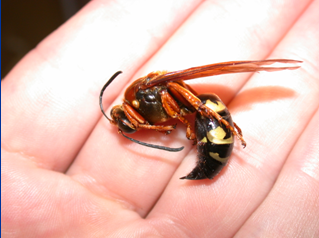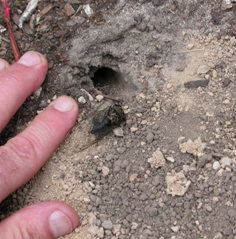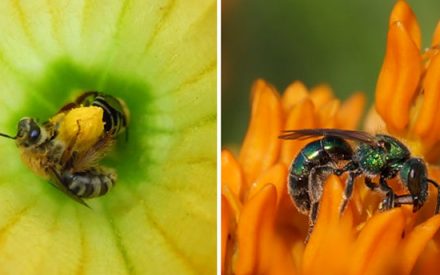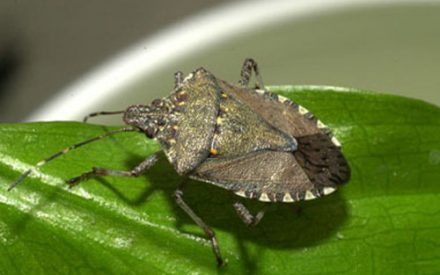
Phil Pellitteri, UW Insect Diagnostic Lab
Revised: 1/4/2011
Item number: XHT1198
Cicada killer wasps have become very common in the southern half of Wisconsin. These solitary wasps are up to 1½ inches long, and their black and yellow coloring makes them look like giant yellow jackets.
Life Cycle: Adult cicada killer wasps appear from mid-July until early September. Males are territorial and often patrol a specific area in the landscape. Adults dig burrows in areas with bare ground (such as flower beds), or under shrubs. Burrows are ½ inch in diameter and up to 10 inches deep. Female cicada killer wasps locate cicadas and paralyze them by stinging them. They place one or two paralyzed cicadas in each burrow that they dig, and deposit an egg on one paralyzed cicada per burrow. Cicada killer wasp larvae develop without adult help.
Control: Solitary wasps such as cicada killer wasps are non-aggressive by nature. Male wasps cannot sting, and in general, female wasps will only sting if handled. Because cicada killer wasps dig burrows in loose, exposed soils, discourage their activity by using mulch or landscape fabric in areas where they are active. If you must treat, put insecticide dusts or granules containing carbaryl, cyfluthrin, deltamethrin or permethrin down any active burrows. These dusts will kill the wasps as they enter or exit a burrow.
For more information on cicada killer wasps: Contact your county Extension agent
Additional Images
Download Article






 Wisconsin Bee Identification Guide
Wisconsin Bee Identification Guide Outdoor Hazards in Wisconsin: A Guide to Insects, Plants, and Wildlife
Outdoor Hazards in Wisconsin: A Guide to Insects, Plants, and Wildlife Pollinators
Pollinators Brown Marmorated Stink Bug
Brown Marmorated Stink Bug


